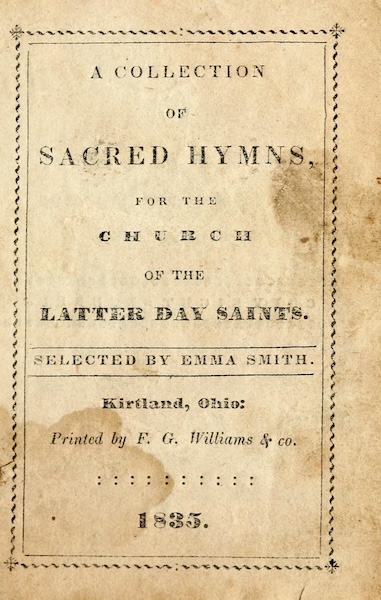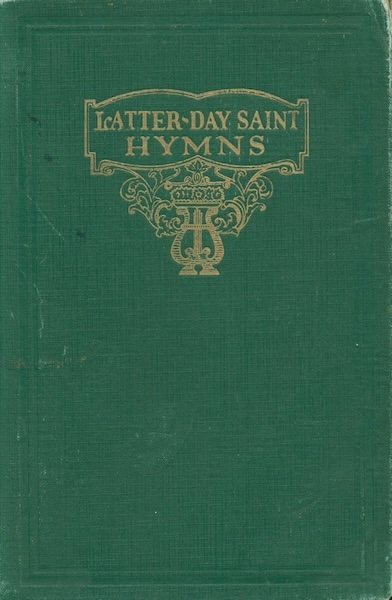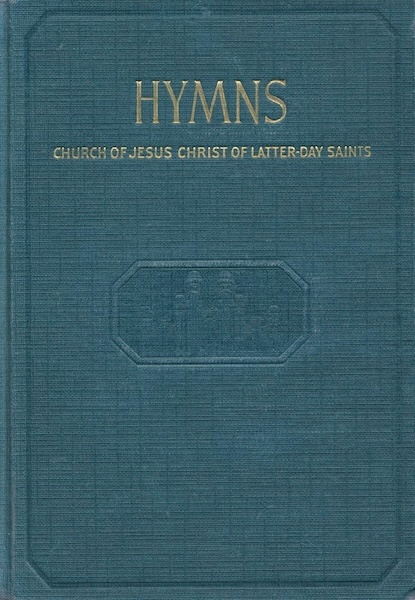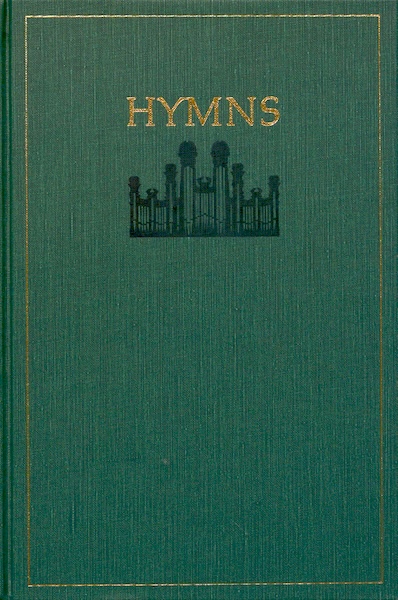Historical Overview
Music published by The Church of Jesus Christ of Latter-day Saints
- Early Hymnals of the Restoration (1830–1860)
- The Growing Church in Utah and Missions (1850–1910)
- Growth and Consolidation (1910–1970)
- Into All the World (1970–2010)
- A Globally Connected Church (2010–2020)
- The New Hymnal: Hymns—For Home and Church
Author’s note: I have browsed through a lot of hymnals, but I’m not an expert in Church history. If you see any errors, let me know! – Samuel

Early Hymnals of the Restoration (1830–1860)
In July 1830, a few months after the Church was organized, Joseph Smith’s wife, Emma Hale Smith, was called to make a selection of hymns to be used by Latter-day Saints (see Doctrine and Covenants 25:11–13).
Several early hymns of the Latter-day Saint movement were published in periodicals, including the Evening and the Morning Star and the Messenger and Advocate. Many of these hymns were written or adapted by William W. Phelps, who edited the periodicals.
In late 1835 and into 1836, “A Collection of Sacred Hymns, for the Church of the Latter Day Saints” was produced in Kirtland, Ohio, with 90 selected hymns (Kirtland hymnal). William was called to help Emma edit the hymns and arrange them for printing. This was the first official hymnal of the Restoration.
The 1835 hymnal quickly went out of print. Between 1838 and 1845, several unofficial hymnals were published to meet local needs: Rogers (1838); Elsworth (1839); Merkley (1841); Page/Cairns (1941); Hardy (1843); Little/Gardner (1844); Adams (1845).
Brigham Young, Parley P. Pratt, and John Taylor, who were serving as missionaries in Europe, published a hymnal for the Saints in Europe in Manchester, England, in 1840 (Manchester hymnal). Soon after, in 1841, a second official hymnal edited by Emma Smith was published in Nauvoo (Nauvoo hymnal).
After Joseph Smith’s death in 1844, there was a succession crisis. Various leaders claimed authority to lead the Church. In 1847, the largest body of the Saints moved to Utah under the direction of Brigham Young. The 1840 Manchester hymnal became the basis for future Latter-day Saint hymnals in Utah.
Several hymnals were published by leaders who remained in the Eastern United States: Rigdon (1845); Wight (1847); Strang (1849); Bickerton (1855); Huntley (1859). Emma Smith, who also remained in the East, published her third hymnal in 1861, followed by a revised edition in 1864, for the use of the Reorganized Church of Jesus Christ of Latter Day Saints (now the Community of Christ).
The first foreign-language hymnals of the Restoration were published in Welsh (1846) and Danish (1851).
All of these early hymnals, except for the Little/Gardner hymnal, were words-only collections. The words were sung to well-known tunes from various sources.

The Growing Church in Utah and Missions (1850–1910) (Return to top)
The Manchester hymnal was originally compiled for the Saints in Europe. However, in 1871 it began to be published simultaneously in Utah, and after 1890 it was published only in Utah. The book went through several editions, with the last edition published in 1912.
As the Church became established in Utah, more Church music began to be published, both privately and under the direction of Church leaders.
In 1889, Latter-day Saints’ Psalmody was introduced, with many of the hymns from the Manchester hymnal set to new music. This book was used alongside the Manchester hymnal.
In 1867, the Deseret Sunday School Union was established, and began publishing songbooks for Sunday school: the Deseret Sunday School Union Music Book (1884), Hymns and Sacred Songs for Children (1888), then the Deseret Sunday School Song Book (1892) with a companion words-only Sunday School Hymn Book (1896), then Deseret Sunday School Songs (1909).
In 1878, the Primary Association was organized. A Primary Hymn Book (words only) and Tune Book were published by Eliza R. Snow in 1880, followed by the Primary Song Book in 1905.
Various Church organizations also started publishing periodicals in the late 1800s and early 1900s, many of which included music.
In 1908, the missions of the Church in the United States, outside of Utah, began publishing a book called Songs of Zion. Hymnals and periodicals were also being published in missions in Europe, New Zealand, Turkey, Japan, and the Pacific Islands.

Growth and Consolidation (1910–1970) (Return to top)
In 1927, Latter-day Saint Hymns was published. This officially replaced the Manchester hymnal, Latter-day Saints’ Psalmody, and Songs of Zion. Deseret Sunday School Songs and the Primary Song Book continued to be used in Sunday school and Primary.
The Primary published The Children Sing in 1951, replacing the Primary Song Book.
In 1919, the Relief Society published Relief Society Song Book. This was replaced by Relief Society Songs in 1940.
In 1928, the Mutual Improvement Association began publishing M. I. A. Songs and Sociability Songs for youth. This was replaced by Recreational Songs in 1949. MIA continued publishing supplements and songs into the 1980s.
In 1948, Hymns: Church of Jesus Christ of Latter-day Saints was published, officially replacing Latter-day Saint Hymns and Deseret Sunday School Songs. A significantly revised edition of the book was published soon after, in 1950.
By the 1970s, the 1948 hymnal and similar hymnals were being published throughout the Church, including Latin America, Europe, Scandinavia, Asia, and the Pacific.
 Into All the World (1970–2010)
(Return to top)
Into All the World (1970–2010)
(Return to top)
As the Church grew rapidly in the 1960s and 1970s, Church leaders felt a need to reevaluate all Church programs and publications, to reduce the burden on members, avoid duplication of effort by Church organizations and missions, and prepare for continued growth.
Between 1967 and 1970, mission periodicals began to be replaced by a unified international magazine (eventually called the Liahona in all languages). For the Church in the United States, various English periodicals were replaced by a single magazine for adults, one for youth, and one for children (Ensign, New Era, and Friend).
In 1973, the Church Music Committee began working on recommendations for a new hymnbook. However, efforts were put on hold by Church leaders in 1977. The project was revived under a new committee in 1983, and in 1985, Hymns of The Church of Jesus Christ of Latter-day Saints was published. This new hymnbook replaced Hymns (1948). It also replaced the separate Relief Society and Mutual Improvement Association songbooks.
The Primary continued to have its own songbook. Sing with Me was published in 1969, replacing The Children Sing. This was followed by a few supplements (Activity Songs and Verses, More Songs for Children, and Supplement to More Songs for Children). In 1989, Sing with Me and its supplements were replaced by the Children’s Songbook.
This era of simplification allowed more resources to go towards smaller areas and languages. A new songbook called Hymns and Children’s Songs was introduced in 1978, with 35 hymns and 10 children’s songs, for areas with few members that previously didn’t have any official Church music in their language. These same songs were added as an appendix in the Gospel Principles manual. Reallocation of resources also allowed more music to be produced in accessible formats, such as audio recordings, Braille, and American Sign Language.
A Globally Connected Church (2010–2020) (Return to top)
As access to the internet and connected devices increased in the 2000s and 2010s, the Church began exploring new ways to reach members and friends around the world. The first official Church website, LDS.org, came online in 1996. The Church music website was introduced in 2004, including the English hymnbook and Children’s Songbook, MP3 downloads, and an interactive music player.
The first official Church mobile apps, Mormon Channel, Gospel Library, and LDS Tools (now Member and Leader Tools) came out in 2010, and LDS Music (now Sacred Music) followed soon after in 2011. By 2015, the Church music website and Sacred Music app had content in more than 30 languages, and the digital music library continued to grow. In 2021, the Church began testing digital-first publishing of hymns, with the Mongolian hymnbook being released in batches throughout the year.
General conference had been broadcast live since 1924, but in the late 1990s it began to be broadcast over the internet as well. Music and the Spoken Word, Tabernacle Choir concerts, devotionals for young adults, and leadership trainings soon followed. In 2008, the Church created an official YouTube channel, and the number of live-streamed events increased, including several events that featured music.
The variety of musical styles produced by the Church also increased during this time. The Church Educational System had begun producing music in contemporary styles for seminary in 1977, and BYU’s Especially for Youth program produced albums starting in 1984, but official Church websites and apps remained focused on hymns and music for Sunday meetings. This changed with A Brand New Year, a musical event for youth in 2009 and 2010, Strength of Youth Media in 2011 and 2012, and annual youth albums starting in 2013. In 2020, Hymns at Home (later renamed to Songs of Devotion) was released, with contemporary arrangements of hymns.
The New Hymnal: Hymns—For Home and Church (Return to top)
In 2017, Church leaders began preparing for a new hymnbook and Children’s Songbook. In June 2018, the project was officially announced to the Church, and members were invited to submit suggestions and original compositions to be considered. In September 2023, it was announced that the title of the new music collection would be Hymns—For Home and Church, and that it would be a single book to replace the previous hymnal and Children’s Songbook. For the latest news, see the “News and Links” tab on the New Music Dashboard.